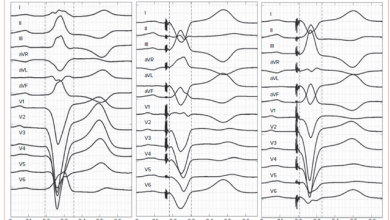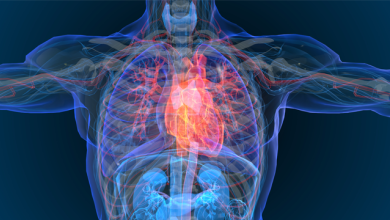Search results
Author(s):
Haipeng Tang
,
Shaojie Tang
,
Weihua Zhou
Added:
3 years ago
Cardiac resynchronisation therapy (CRT) is a widely-performed standard treatment for improving cardiac function and quality of life in patients with heart failure.1 After CRT, however, 30–40 % of patients do not experience improvements in left ventricular (LV) function and clinical symptoms.2–3 The key factors for increasing the response rate to CRT are identification of the optimal LV lead…
View more
Author(s):
Peter H Waddingham
,
Pier D Lambiase
,
Amal Muthumala
,
et al
Added:
2 years ago
Author(s):
Geoffrey F Lewis
,
Michael R Gold
Added:
3 years ago
Since the introduction of CRT more than 20 years ago, its role in mild to severe systolic heart failure has become well established. CRT has been shown to decrease mortality, reduce heart failure hospitalisations and improve functional status in patients with NYHA class II–IV heart failure and QRS prolongation, most commonly with LBBB pattern.1 One of the major limitations of CRT implementation…
View more
Author(s):
Baldeep S Sidhu
,
Justin Gould
,
Mark Elliott
,
et al
Added:
3 years ago
Author(s):
George Thomas
,
Jiwon Kim
,
Bruce B Lerman
Added:
3 years ago
CRT is an essential treatment for patients with heart failure and reduced ejection fraction as it can restore left ventricular (LV) electrical and mechanical synchrony. It has been shown to increase quality of life, improve functional status, reduce hospitalisation, improve LV systolic function and reduce mortality in properly selected patients.1,2 While CRT is an effective therapy, approximately…
View more
Update in Cardiac Pacing
Author(s):
Nishant Verma
,
Bradley P Knight
Added:
3 years ago
Article
Author(s):
Fatima M Ezzeddine
,
Isaac G Leon
,
Yong-Mei Cha
Added:
8 months ago
Author(s):
Parikshit S Sharma
,
Pugazhendhi Vijayaraman
Added:
3 years ago
Review of Leadless Pacing
Author(s):
Nadeev Wijesuriya
,
Felicity De Vere
,
Vishal Mehta
,
et al
Added:
1 year ago
Article
Conduction System Pacing
Author(s):
Ahran D Arnold
,
Zachary I Whinnett
,
Pugazhendhi Vijayaraman
Added:
3 years ago
Article
















